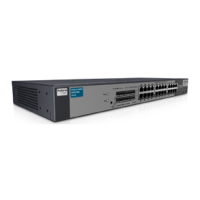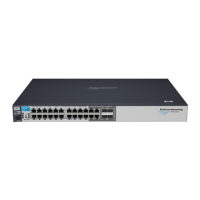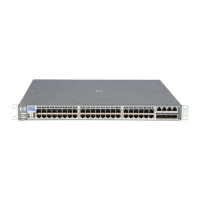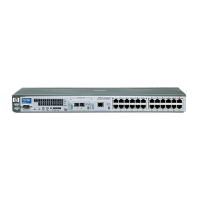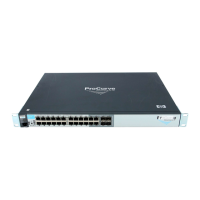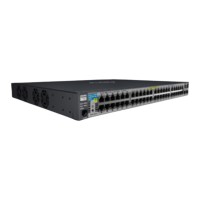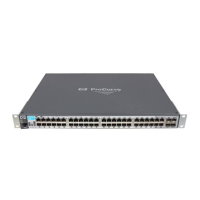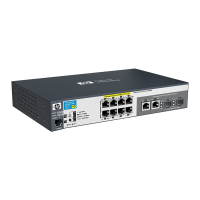Port Status and Basic Configuration
QoS Pass-Through Mode
Syntax: [no] qos-passthrough-mode
write memory
reload
The above command sequence enables QoS pass-through
mode. The no form of the command sequence disables QoS
pass-through mode. (Default: Enabled)
For example:
ProCurveconfig)# qos-passthrough-mode
Command will take effect after saving configuration and
reboot
ProCurveconfig)# write memory
ProCurve(config)# reload
This command can be enabled and disabled only from the switch's CLI. QoS
passthrough mode cannot be enabled or disabled through either the switch's
menu or web browser interfaces.
Once enabled, this feature adds qos-passthrough-mode to the switch’s startup-
config file. For example, in an otherwise default configuration, executing show
config lists the startup-config file (with QoS pass-through mode enabled) as
follows:
ProCurve Switch 2810-48G# show config
; J9022A Configuration Editor; Created on release #N.10.XX
hostname "ProCurve Switch"
Indicates QoS Pass-
cdp run
Through mode enabled.
qos-passthrough-mode
snmp-server community "public" Unrestricted
Figure 10-14. Example of the Startup-Config File Listing with QoS Pass-Through Mode Enabled
10-25
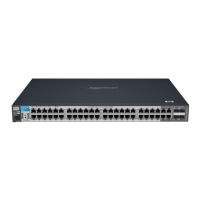
